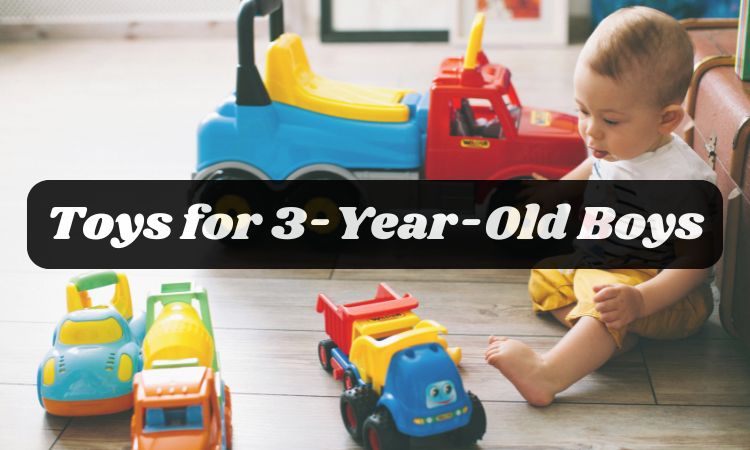When to Start a Routine with a Newborn: Key Tips for Parents
The first few weeks with a newborn can feel like a whirlwind of feedings, diaper changes, and sleepless nights. Amid the chaos, many parents wonder when it’s the right time to introduce a sense of structure into their baby’s day. Understanding when to start a routine with a newborn is key to creating a calming rhythm that supports both the baby’s development and the parents' well-being.
This blog explores when to start a routine for a newborn, why early structure can be beneficial, and practical tips to begin building a simple daily rhythm. Keep reading for helpful guidance and support.

Alt: Baby schedule
When to Start a Bedtime Routine with a Newborn?
The best time to start a routine for your baby is typically around the second month after birth. Before this point, attempting a schedule usually isn’t very effective. In those early weeks, your newborn is still getting used to life outside the cozy womb, where day and night don’t really matter. They’re not ready to follow any predictable schedule yet, and pushing too soon could leave both of you feeling stressed.
During the first month, your main job is simply to provide comfort—think of yourself as an expert womb impersonator! Swaddling, rocking, using white noise (shushing), holding your baby on their side or stomach, and giving them opportunities to suck can help them feel secure and comfortable as they adjust.
By the second month, however, your little one’s internal clock starts to mature. Feeding and sleeping patterns naturally become more predictable, making it the perfect opportunity to gently introduce routines. You can start with small rituals like bathing, reading a calming story, and feeding before bedtime. Gradually, these soothing patterns help your baby anticipate what's coming next, providing structure for both of you and making daily life smoother and happier.
Benefits of Establishing a Routine Early
Creating a routine early on can make life smoother for both you and your baby. Let’s take a look at some of the key benefits a consistent daily rhythm can bring to your growing little one and your own peace of mind:
l Creates a sense of security: Babies feel safer and more relaxed when they know what to expect. A predictable routine can reduce fussiness and help them adjust to life outside the womb.
l Improves sleep habits: Consistent bedtime cues—like a bath, lullaby, or feeding—can help your baby fall asleep faster and sleep more soundly.
l Eases feeding times: Regular routines help babies recognize when feeding is coming, which can reduce crying and make mealtimes more peaceful.
l Supports healthy development: A stable routine supports your baby’s emotional and physical development by helping regulate their internal clock and giving their body time to rest and grow.
l Gives parents structure: Predictable nap and feeding windows allow you to plan your day better, reduce stress, and carve out time for yourself.
l Builds long-term habits: Routines formed early can make future transitions—like sleeping in their own room or starting solids—go much more smoothly.

Alt: Sleeping baby
How to Start a Routine for a Newborn?
Ready to bring a little more structure to your day? Let’s walk through some gentle, realistic steps to help you ease into a newborn routine that works for both of you.
Start with Bedtime
Bedtime routines are often the easiest place to begin. Choose a consistent time each night and follow a soothing sequence—like a warm bath, cozy jammies, a feeding, and then lights-out. The repeated pattern helps signal to your baby that it’s time to sleep. In the early months, it’s okay if feeding lulls them to sleep. But by 3 to 4 months, try putting them down while drowsy but still awake to help them learn how to fall asleep on their own.
Teach the Difference Between Day and Night
Many babies confuse their days and nights during the first few months, but you can help clear things up! During the day, keep your home bright, lively, and interactive. For example, you might engage your baby with a gentle baby rattle or other toys. Take your little one outside for fresh air and sunshine to help them recognize daytime. At night, dim the lights, speak softly, and keep interactions calm and minimal to signal restful sleep.

Alt: Baby rattle
Watch Your Baby’s Cues
Books and experts can guide you, but your baby is the best source of information. Look for signs they’re tired, hungry, or ready to play. Yawning, rubbing eyes, turning away—these cues help you respond in sync with their needs.
Create a Sleep-Friendly Environment
A dark, quiet (or white-noise-filled), and cozy space helps set the mood for naps and bedtime. Soft, consistent white noise mimics the comforting sounds of the womb, calming your baby and blocking sudden distractions. Gentle swaddling can also help your baby feel safe and secure, while maintaining a comfy room temperature ensures restful sleep and peaceful dreams for your little one.
Keep Things Consistent
Repetition helps babies feel more secure. By following the same steps each day—like feeding your baby every hour-and-a-half to two hours, then settling them down for a nap—you’re creating a comforting routine.
That consistency also applies to naps. Monitor how long your baby is sleeping during the day—if a nap stretches beyond two hours, gently wake them for their next play or feeding period. Long naps can lead to less daytime feeding, which often results in your baby waking up hungrier and more frequently at night.
Put Baby’s Schedule First (At Least at First)
When you're just getting started with a routine, try to avoid too many disruptions—like skipping naps for errands or stretching feedings for convenience. Once the routine is in place, you’ll have more flexibility.
Growth spurts, developmental leaps, and teething can temporarily throw routines off. That’s totally normal. Stay flexible, and adjust as needed—your routine isn’t broken, it’s just evolving.
Conclusion
Starting a simple routine with your newborn can really make things easier for everyone. A good time to begin is usually around month two, when your baby’s natural patterns start to become more noticeable. Take it slow, stay flexible, and follow their cues.
Don’t stress about perfection. No day will look exactly like the last. And that’s okay. The goal is to build consistency over time, not to run your day like a clock. As long as your baby is fed, loved, and rested, you’re doing great.
FAQs about When to Start a Routine with a Newborn
When should you start a schedule for a newborn?
Experts generally recommend waiting until your baby is about one to two months old before introducing a schedule. Before that, newborns tend to follow their natural rhythms for feeding and sleeping. Around the second month, as patterns emerge, you can gently encourage a routine, focusing on consistency without forcing a strict timetable.
What is the 5-3-3 rule for babies?
The 5-3-3 rule is a simple daily rhythm that helps keep your baby rested and happy. It means starting the day with a 5-hour sleep stretch, followed by 3 hours of awake, interactive time, then another 3 hours of sleep. This balanced pattern ensures plenty of rest and fun.
How long does it take to establish a newborn routine?
It varies for each baby, but most families notice that by two to three weeks of consistent effort, their baby starts to follow a more predictable pattern. The key is to remain patient and adjust as needed.
Do I need to entertain my newborn all day?
No, you don’t need to entertain them constantly. Newborns thrive on simple interactions. Gentle talk, a few minutes of tummy time, or holding them while they observe their surroundings is enough. As they grow, their awake periods will naturally become more interactive.







Share and get 5% off!
Simply share this product on one of the following social networks and you will unlock 15% off!